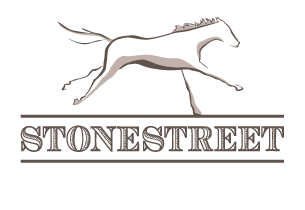October is a busy month at the Stonestreet Training Center in Florida. Yearlings have arrived from the major yearling sales and breeding farms all over the United States. After a week to settle in and adjust to the new routine it’s time for them to be “backed”, the term describing the process of teaching babies… Read more »
Subscribe to Our Blog
11 Things You Might Not Know About Thoroughbreds
1. Every thoroughbred foal is DNA tested to confirm his or her parentage. Hair is pulled from the tail and sent to a laboratory in California. 2. Pregnant and non-pregnant mares do not share paddocks. Care is different for pregnant and barren mares and separation makes this easier. 3. On an ultrasound machine used to check… Read more »
Yearling Sale Preparation
The foundation of successful preparation of sales yearlings is established when a mating is chosen and must be followed by proper care and nutrition during pregnancy and parturition, and subsequent good management of the foal. This base of best of practice care should (hopefully!) bring us to June of the yearling year with a crop… Read more »
Foal Farrier
Shortly after birth, a foal will make its first attempts to stand and, before long, succeeds. While starting off a little wobbly, that same foal will be running next to mom in a paddock in no time. Still very small and developing, the hooves are the foundation of a well-built horse and it is important… Read more »
The Weaning Process
Driving the scenic roads of the Bluegrass Region, thoroughbred horse farms flank both sides. With field upon field housing the mainstay of Kentucky’s breeding operations, you start to notice a disparity between the number of mares and foals; the weaning process has begun. Weaning is the separation of a foal from its dam, which can… Read more »
Soil Aeration
At Stonestreet, our horses spend most of their time in fields and paddocks, enjoying the fresh air. This time outside is important for fitness as well as nutrition. The time spent grazing is essential to the health of every horse on the farm and making sure that they are receiving the best grass possible begins… Read more »
Race Tack
Standing on the rail at any racetrack paddock will give you a view of horses preparing for their race. Walking into the paddock, the horse will be wearing only a bridle. In the saddling area, which can either be in a designated walking area or in a stall, the valet arrives with the tack which… Read more »
Foal Vaccinations
During the first 90 days of a foal’s life, the colostrum received when nursing provides protection. As we learned in a previous blog, antibodies are transferred from the dam via the colostrum and offer immunity from disease, but what happens when this protection begins to dissipate? Once he or she is 90 days of age, a… Read more »
Breezing Two-Year-Olds
The fastest workout a horse will accomplish prior to race day is a “breeze”, when a horse will travel approximately 1 furlong in 12 seconds. It is the final step for the two-year-olds at Stonestreet Training Center before they move to various trainers at the racetrack. As we learned in the blog “Race Track Training”,… Read more »
Checking a Mare for Pregnancy
Earlier in our series, we joined our Broodmare Farm Manager and Rood & Riddle’s Dr. Riddle to learn about palpating barren and maiden mares in preparation for breeding season. The process of determining the best time to breed a broodmare has been completed and now we have the anticipation of checking for pregnant broodmares! Broodmares,… Read more »
